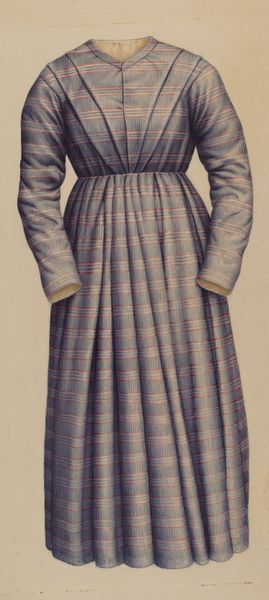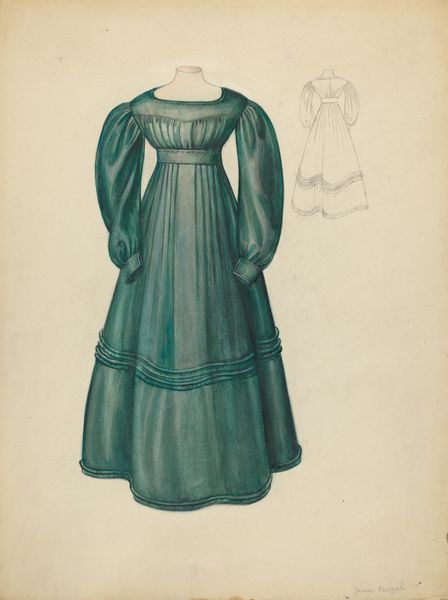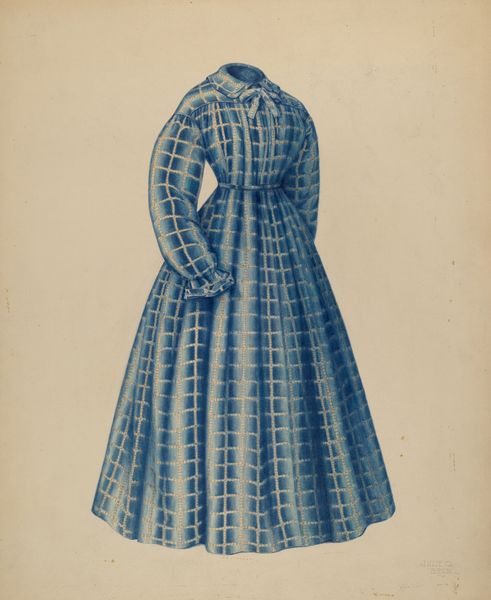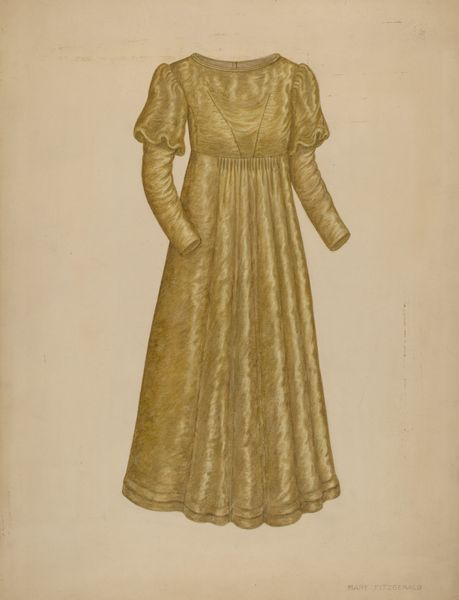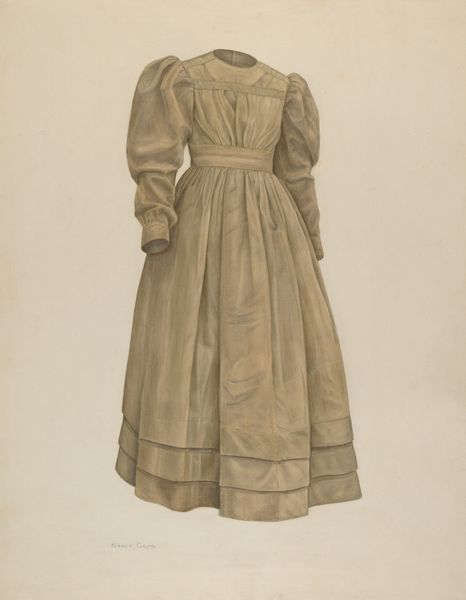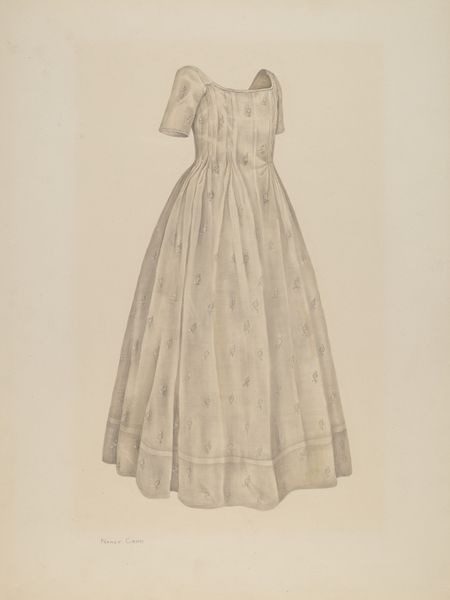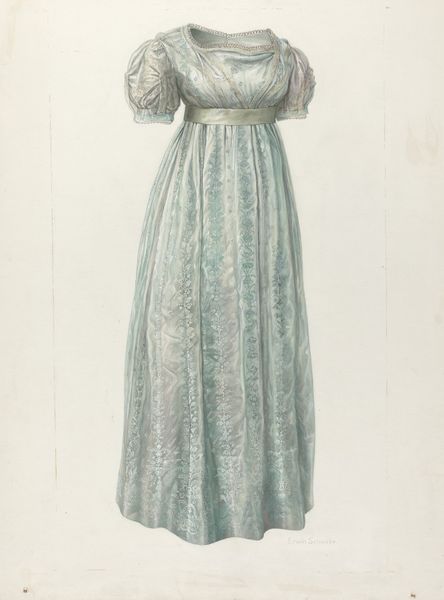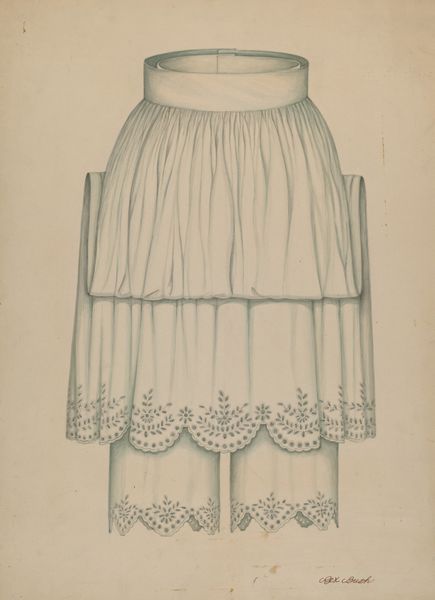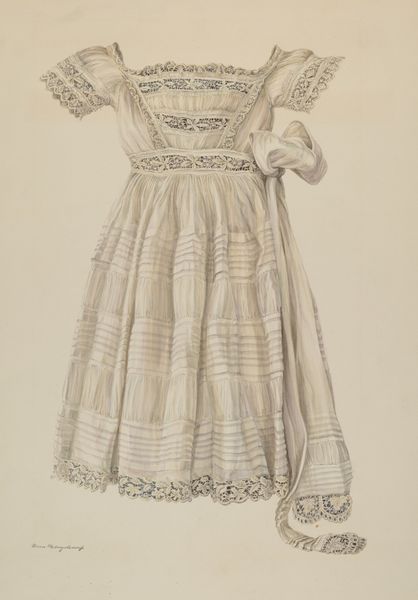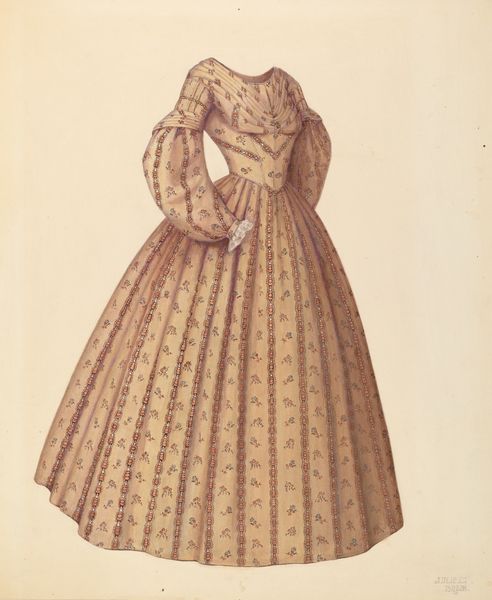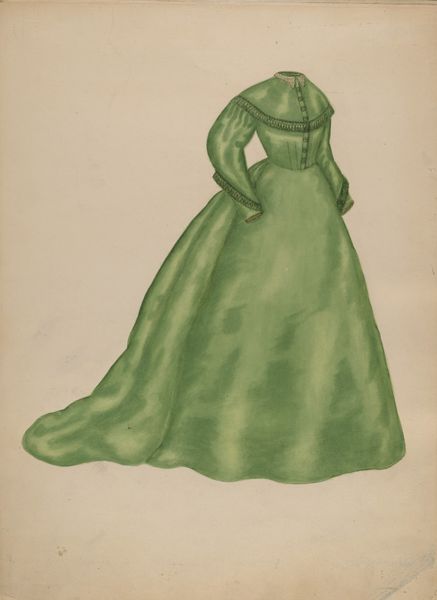
Dimensions: overall: 46.3 x 37.6 cm (18 1/4 x 14 13/16 in.) Original IAD Object: 37 1/2" long; 91" wide
Copyright: National Gallery of Art: CC0 1.0
Curator: Let's take a closer look at "Dress," a design drawing created around 1938 by Nancy Crimi. Editor: Immediately, I'm struck by its materiality—or, rather, its *imagined* materiality. That lush, shiny fabric, probably envisioned as silk or satin, is so central to its appeal. Curator: Absolutely. You can almost feel the weight and sheen of it, even rendered on paper. Crimi, though lesser-known today, was working within a broader historical moment where fashion became democratized yet continued to reflect aspirational values tied to class and status. How might a garment like this have played into those tensions? Editor: Well, think about the labor involved. Crimi likely conceived it, but then the skilled seamstresses, probably underpaid and often marginalized, would transform the design into a tangible object. The puffed sleeves and detailing hint at time-intensive production. Curator: Indeed. The dress evokes the romanticism fashionable at the time while potentially masking the exploitative conditions that underpinned its creation. It becomes a visual representation of complex social hierarchies, particularly those surrounding gender roles and economic disparity. What about Crimi as a woman fashion designer, what message might she try to promote at the time, or for what demographic? Editor: It is certainly telling that the designer seems focused more on the dress design than any person to actually wear it. Curator: So the wearer is less of an issue for the maker? That is an interesting proposition. It emphasizes her creative, intellectual, or craftperson capacity to be assessed on this artifact alone, as an indication of capacity or promise. And for this type of creative product that may be an advantage. Thank you for bringing to my attention this less acknowledged angle in women's creative production at the time. Editor: Thinking about Crimi's intent, along with the resources necessary to produce such a garment, opens pathways for re-evaluating the garment’s status as either an artistic artifact or the first step of commodity production. Thank you, as always, for your social and historical interpretation. Curator: And thank you for pulling our feet back to the material roots that allow objects to exist at all, not only the wearer, but all of the conditions for wearing it.
Comments
No comments
Be the first to comment and join the conversation on the ultimate creative platform.
